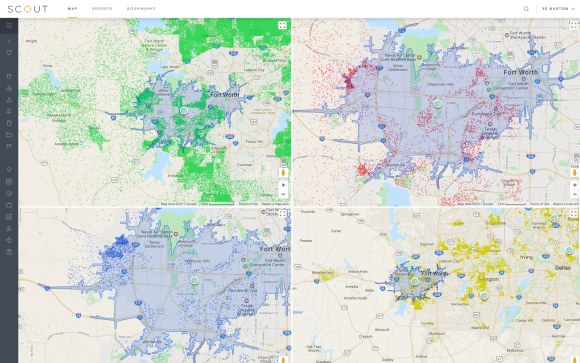No matter what role you hold with a local government, if you are involved with the process of attracting new businesses to your community, you are a marketer. In order to recruit the best businesses – particularly retailers – for your residents, it’s crucial to effectively market your community. In this blog, we share some of the basics of a solid community marketing strategy that can strengthen your community’s business and retail attraction efforts.
Positioning Your Community as a Potential Growth Market
The first step in developing a community marketing strategy is to truly understand your community. When you know who you are, you can effectively describe your community to potential businesses. You also know what types of retailers and other businesses would be a great fit for your market.
But how do you go about getting this information? First, you can interview people who live in your community. How do they describe the community? What themes emerge? Secondly, look at data on your community to have unbiased, quantitative research to show potential businesses.
Making Allies and Networking
New business attraction doesn’t happen in a vacuum; you have to identify your allies and network to make the connections that will result in a deal. Allies can be grouped into three major categories:
- Developers and brokers
- Local property owners
- Local business owners
Other groups to connect with are local business owners and franchisees. Identify those individuals who have shown that they can successfully run a profitable business, as they might be willing to invest in another business.
Generating Qualified Leads
The most important thing to remember in lead generation is this: quality is better than quantity. It’s better to talk to one retailer that is a great fit for your community, rather than going after ten retailers that aren’t likely to consider your community.
Begin by creating a list of retailers you think are the right fit for your community and residents. After identifying this list, it’s time to begin contacting these businesses. This can be a long and time-consuming process, so don’t get discouraged. You can even delegate some of the workload to other city staff members who can help with scheduling calls and sending emails.
Another way to network and make connections is by attending regional events, like those hosted by the International Council of Shopping Centers (ICSC). To yield the best results, be prepared, set meetings, and follow up with your contacts to build long-term relationships.
Creating Winning Marketing Collateral and Community Branding
Marketing collateral is how you tell prospective businesses about the opportunities in your community. It encompasses a wide variety of formats, from traditional materials such as brochures, to digital communication such as your website and social media.
Great marketing collateral uses consistent branding across all materials. By using a uniform look that reflects your community’s identity, you present your community as polished and professional. Make sure you are using consistent fonts, colors, and even key phrases/taglines. Effective community branding tells the story of your community and helps potential businesses understand why your community is a perfect fit for their brand.
Another important thing to remember is that pictures are often worth a thousand words. Help prospective businesses visualize your opportunities by showing pictures or renderings of available sites, and even include property details when available.
The Bottom Line
Marketing your community to prospective businesses doesn’t have to be complicated, but it does require having a solid plan and developing the tools to help you execute that plan.
To learn more about the tools that can help you support your community's marketing efforts, check out our public sector platform.


